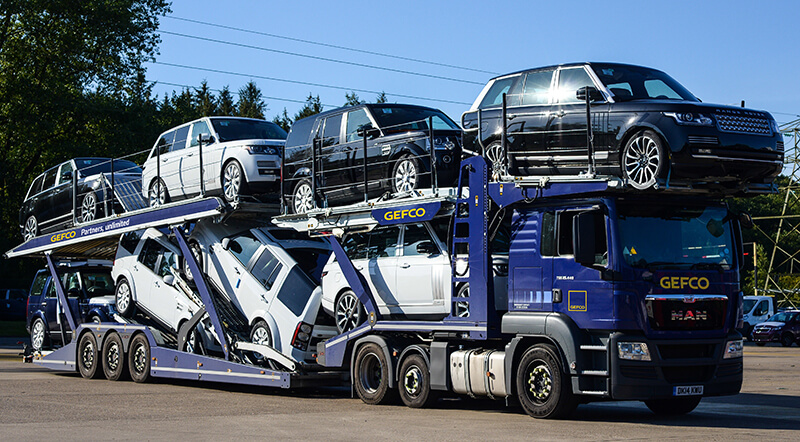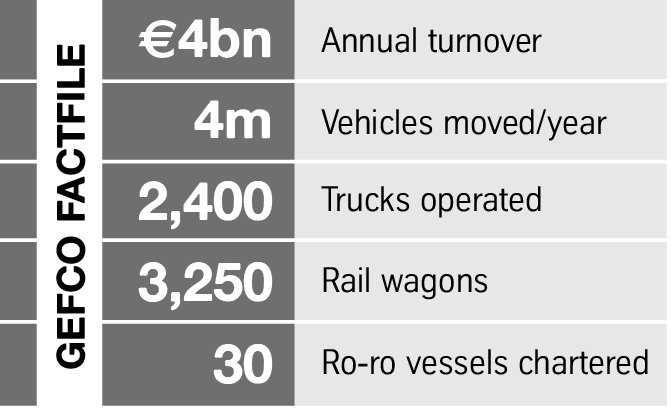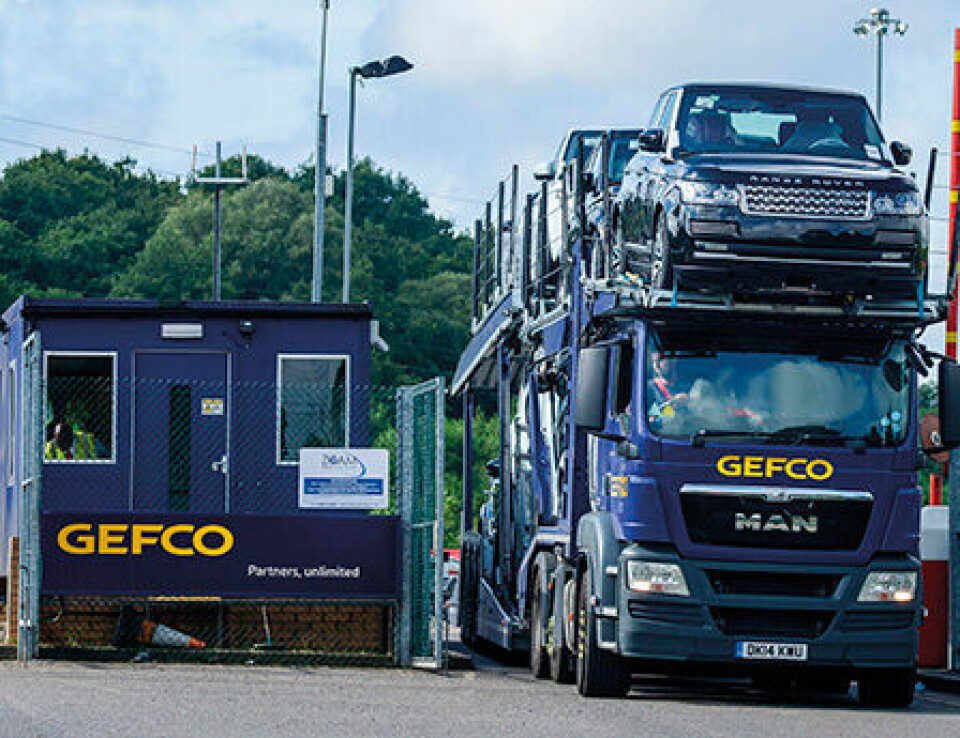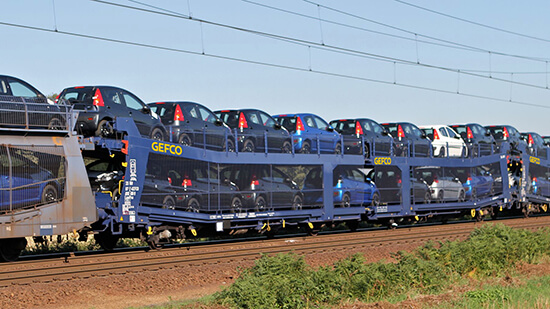Gefco: Full of get up and go
 French transport and logistics provider Gefco started 2018 with an announcement in Paris that it was looking to cooperate more closely with its partners and customers. At the same time, the company said it was looking for international growth and new business as it continued to move beyond the traditional scope of its activities as a logistics provider to the automotive sector.
French transport and logistics provider Gefco started 2018 with an announcement in Paris that it was looking to cooperate more closely with its partners and customers. At the same time, the company said it was looking for international growth and new business as it continued to move beyond the traditional scope of its activities as a logistics provider to the automotive sector.
That does not mean it is in any way moving away from the automotive sector, however, which currently accounts for 70% of its revenue.
In fact, Luc Nadal, president and chairman of the board, says it is making its services to the automotive sector more comprehensive and developing new areas of service, as well as investing in rail and road equipment to optimise finished vehicle deliveries in Europe.
Gefco was originally the logistics subsidiary of PSA Peugeot-Citroën, but the carmaker sold 75% of the company to Russian Railways (RZD) for €800m ($1.05 billion) in 2013. While it continues to handle a large volume of PSA business, it is now also working for a number of other carmakers worldwide and moves around 4m vehicle units a year on its road, rail and chartered ocean services.
 On the outbound side of the business, Gefco has seen double-digit growth on an organic footing over the last three years. In 2017, it saw a recovery in the automotive sector in Europe and a shortage of transport capacity in the market. While it is predominantly an integrator of services, Gefco is now investing in car-carrying equipment and trucks.
On the outbound side of the business, Gefco has seen double-digit growth on an organic footing over the last three years. In 2017, it saw a recovery in the automotive sector in Europe and a shortage of transport capacity in the market. While it is predominantly an integrator of services, Gefco is now investing in car-carrying equipment and trucks.
At the press conference in Paris in January, Nadal said the company was opening up to new industrial sectors including aviation, manufacturing, energy, life sciences and healthcare, among others. Gefco has an annual turnover of €4 billion (around $4.9 billion) and is looking for 10% growth this year. It wants €2.1 billion of that to come from outside its historic PSA business, both in terms of new automotive business and business outside the sector.
In fact, given PSA’s takeover of Opel/Vauxhall, Gefco is in a good position to benefit from more demand for services in that direction. It is already the exclusive provider of fourth-party logistics (4PL) services to Opel/Vauxhall and handles procurement and logistics for the division. Nadal says it currently has multi-year contracts with both PSA and Opel/Vauxhall but there is scope for creating a greater synergy between the two.
“The Opel/Vauxhall contract continues and the company is reflecting on the situation to see how the service can evolve,” says Nadal, adding that he is confident that Gefco could bundle supply chain services for PSA and its new division. “Whether that happens will depend on how they organise their integration,” he adds.
While it is unclear at the moment what the integration will mean for the companies’ overall footprint – there are questions hanging over the factories at Ellesmere Port (UK), Poissy (France), Madrid (Spain) and Eisenach (Germany) – Nadal says the company is expecting significant changes to the supplier set-up over the next three years.
“Integration will mean shared suppliers and they will need to position them very close to the plant,” says Nadal. “So I think there will be significant changes – but it has not happened yet, seen from our side.”
According to Nadal, Gefco ran a supply chain architecture project with PSA a few years ago and redesigned services that brought major savings for the carmaker. “I think they have to do that one more time because of the acquisition of Opel/Vauxhall, and we have a clear vision of how to do that,” he says.
 "We have reformulated the values and mission of the company, its convictions and beliefs. And we are setting the course on innovation in a rapidly changing world; we need to innovate more – and organise with innovation in mind." - Luc Nadal, Gefco
"We have reformulated the values and mission of the company, its convictions and beliefs. And we are setting the course on innovation in a rapidly changing world; we need to innovate more – and organise with innovation in mind." - Luc Nadal, Gefco
Partners, unlimitedNadal says that greater cooperation with new and existing customers like PSA is part of a deeper cultural change at the company that is reflected in its revamped branding, which now includes the signature ‘Partners, unlimited’. The changes at the company follow a two-year project involving 2,000 managers that included a comprehensive review of activity to better understand what distinguishes Gefco as a logistics provider.
“At the end of 2016, we realised that to come out of the PSA matrix was not easy,” says Nadal. “We had to better understand what we are here to do and this led to the Infinite Proximity project.”
Through that project, Nadal says, Gefco has come to understand that it is through sustainable relationships, lasting cooperations and innovation that it can improve the supply chain.
“We have reformulated the values and mission of the company, its convictions and beliefs,” says Nadal. “And we are setting the course on innovation in a rapidly changing world; we need to innovate more – and organise with innovation in mind.”
Gaining ground overseasDiversification of activity into the consumer vertical (where Gefco is already collecting merchandise for Amazon suppliers for delivery to the warehouse) and the use of air and ocean services to support the pharmaceutical industry in Germany are just two examples of new territory gained in 2017. Another is the warehouse the company opened to support life sciences and healthcare customers in the UK at the beginning of the year.
However, the diversification of services is also proceeding rapidly within the automotive sector. The company is already strong in the Europe, Middle East and Africa (EMEA) region on the outbound, inbound and aftermarket side of the business, but it is also now established across the world – including in China, where it is moving vehicles from the main production centres out to the regions. Gefco’s Asia division, for instance, has been handling finished vehicles for Volkswagen Group brands in China for about four years, taking them from the ports of Shanghai and Tianjin to dealerships throughout the country.
[mpu_ad]Gefco is also now using new ‘Silk Road’ rail links to move parts in and out of China. In November last year, for example, it handled its first dedicated block train of containerised parts between China and France. It is also handling the movement of electric vehicles for BMW to China on its chartered ro-ro vessels. The German OEM moves the i3, i8, X5 PHEV and BMW 7 Series PHEV to China by ocean (though it will not disclose the volumes).
The company is also making further gains in Russia. In November last year, Gefco bought 720 rail cars and a vehicle storage compound from Russian finished vehicle provider, Rail Trans Auto. It has not revealed the level of investment, but last year Nadal talked about a potential €400m spend on mergers and acquisitions in the country. This potential investment is buoyed by the fact that Gefco has no debt and produced earnings before tax of more than €200m last year, meaning it can leverage at least twice that to invest – though Nadal is quick to point out that this was not exclusively for investment in Russia.
The reason why it has chosen to invest there is to support the growing trade in exports of Russian-made cars within the Commonwealth of Independent States (CIS). Last year, Russian carmakers started more aggressively looking for export markets, given poor domestic sales over the last three to four years.
“Russian Railways were choosing their time to invest and Rail Trans Auto were looking to sell their rail cars, which were leased from the banks,” says Nadal. “We took over those contracts and the wagons are now the property of Gefco.”
The company has also taken over Rail Trans Auto’s compound near Moscow and is currently planning how best to use the additional facility. Nadal says Gefco’s own facility at Domodedovo, south of Moscow, is now at 85% capacity, in another indication that recovery is underway in Russia’s car market.
On the subject of whether RZD is going to proceed with a partial divestiture of shares in Gefco while remaining the majority shareholder, Nadal says this is not under discussion at present. Plans for expansion in the US, meanwhile, remain on the drawing board for the moment.
“We had a beautiful opportunity at the beginning of 2017 and would have invested slightly more than €400m,” he says. “It would have been a purchase of a company in the finished vehicle business, one of the leaders, but we didn’t get the green light and for us it has been a disappointment.”
On the outbound side of its business, Gefco has seen double-digit growth on an organic footing over the last three years

However, Nadal says the company is continuing to look and is confident that another opportunity will turn up, either with the same company or another that is a good fit.
End user demandElsewhere, the company is moving into more personalised finished vehicle services with the introduction of ‘My Car is There’, a service enabling end customers to manage the delivery of their new vehicles through a mobile app.
Nadal says Gefco’s provision of finished vehicle services lay traditionally in the long-distance delivery of vehicle volumes across different modes. That is still true of the new vehicle market but the used car market has changed quite significantly, and Gefco has responded.
“This used to be very regional but now you can buy a car from wherever you like over the internet, which has created a greater need from this area for transport services,” says Nadal. “There is also the problem of repositioning assets in the rental and leasing market. These are not well served at the moment and it is something that Gefco is now supporting.”
One of the other issues facing the finished vehicle sector – and not just in Europe – is the level of consolidation it has experienced over the last few years. Services have disappeared and Nadal is keen to stress that Gefco, established as an integrator of services, is also a strong operator on the finished vehicle side of the business.
“We are not just an integrator but also an operator,” he points out. “It is not our strategy to become one [exclusively] but we will demonstrate that we have the capability.”
Nadal says Gefco will remain primarily an integrator with its own ecosystem of players, but in a world where there is a lot of consolidation the company needs to show that it is able, whenever it wants, to develop its own capabilities. “Otherwise, we will have consolidation followed by consolidation. I don’t want to be part of that,” he says.
The company’s investment in car-carrying equipment and trucks means that whether in French, Italian or Slovakian regions, Gefco has its own fleet in the development phase and retains the assets it owns, following the Mercurio buyout.
Nadal says the company has not determined a target for the number of trucks it wants to own in the future but that it has a certain capacity to operate and a network of partners operating for it. Further truck asset purchases will be made as the market recovers but such work will never exceed 25% of Gefco’s activity, he adds.
“My message to the market is clear: Gefco is a good partner, including with our competitors – we are exchanging flows in backhaul – but Gefco will not be the prisoner of a market that consolidates,” he concludes.
On the roads, Gefco currently has recourse to a fleet of 2,400 carriers, with around 1,350 subcontracted on a full-time basis and 1,050 owned or leased. That makes it the second-biggest carrier by fleet size in Europe (behind the recently consolidated Groupe Cat, which bought STVA in November last year).
This does not mean that last year was problem-free in terms of finding sufficient capacity for vehicle movements, however. Nadal says that in June and July, a boost in sales for PSA meant that Gefco had to introduce services on Saturdays, among other solutions, to deliver vehicles to customers on time.
 Gefco operates 3,250 rail wagons and has been working on new designs to achieve greater loading flexibility
Gefco operates 3,250 rail wagons and has been working on new designs to achieve greater loading flexibilityOne of the big problems for the finished vehicle sector at the moment (both in Europe and the US) is the shortage of drivers, a problem made worse as the car market in Europe begins to recover.
Nadal says that through its Mercurio subsidiary, the company is inviting general merchandise drivers to specialise in finished vehicle work. Gefco bought a 70% controlling stake in Italian operator Gruppo Mercurio back in 2011 and has built services both in central Europe as well as in India. The division now operates 250 trucks in Europe.
When it comes to rail, meanwhile, Gefco owns and operates 3,250 rail wagons and has recently been working on new designs for high capacity bi-level rail wagons that are now in production and will allow it to load SUVs on either the top or bottom deck. It says the adjustments to the upper platforms of the new wagons can increase capacity by 10% and that this provides for optimised transport planning with, say, light passenger vehicles transported on one route while utility vehicles are loaded on the return. Gefco also says the wagons allow for direct loading without the need for an access ramp.





